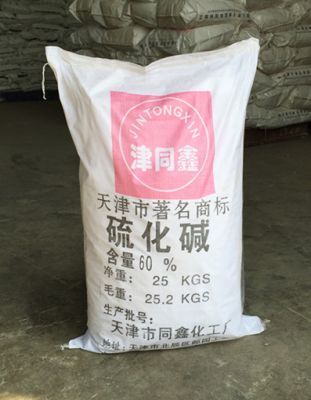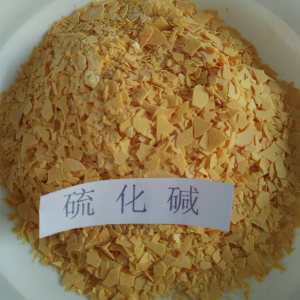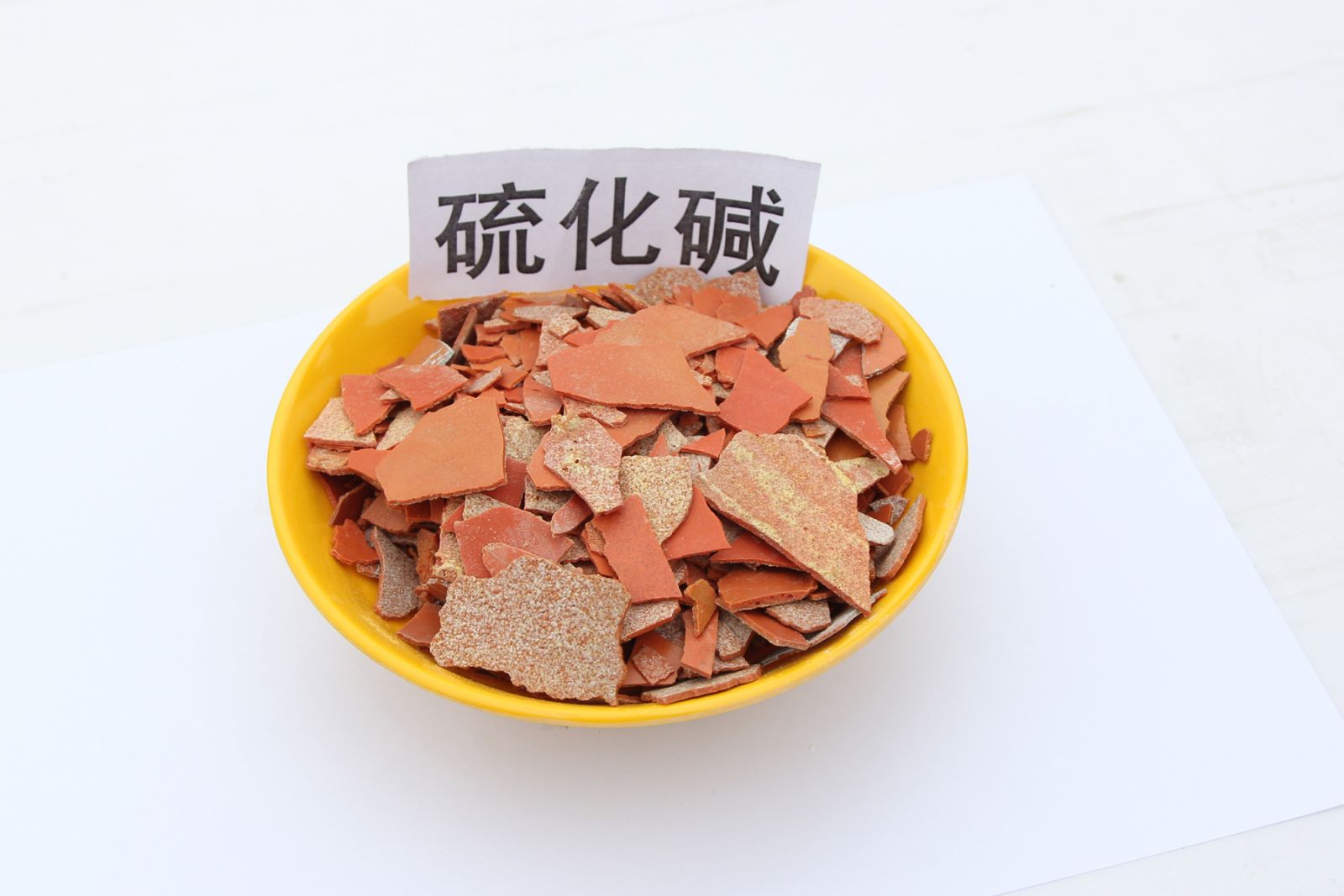Alkali sulfide
Alkali sulfide generally refers to sodium sulfide.
Sodium sulfide is also known as stinky alkali, stinky soda, flavonoid, and alkali sulfide.Sodium sulfide is an inorganic compound, and pure sodium sulfide is a colorless crystalline powder.It has strong moisture absorption and is easily soluble in water.The aqueous solution exhibits a strong alkaline reaction.Causes burns when touching ~ and hair.Therefore, sodium sulfide is commonly known as alkali sulfide.Sodium sulfide aqueous solution will slowly oxidize into sodium thiosulfate, sodium sulfite, sodium sulfate and sodium polysulfide in air.Due to the rapid formation of sodium thiosulfate, the main product of oxidation is sodium thiosulfate.Sodium sulfide deliquescence in the air, and carbonation and deterioration, constantly releasing hydrogen sulfide gas.The color of industrial sodium sulfide is pink, reddish brown, and khaki because of impurities.Specific gravity, melting point, and boiling point also vary due to the influence of impurities.

Basic Information
English name | SODIUM SULFIDE |
nickname | Anhydrous sodium sulfide, xanthophylline |
chemical formula | Na2S |
density | 1.86 |
CAS login number | 1313-82-2 |
EINECS accession number | 215-212-0 |
melting point | 950℃ |
water soluble | 186 g/L (20℃) |
Physical properties
Pure products are colorless or slightly purple prismatic crystals at room temperature, and industrial products are often pink, brown-red, and khaki blocks due to impurities.
Has an odor.Soluble in cold water, easily soluble in hot water, slightly soluble in alcohol.Industrial products are generally mixtures of crystal water with different shapes, and contain different degrees of impurities. In addition to different appearance and color, density, melting point, boiling point, etc. are also different due to the influence of impurities.
Chemical properties
It decomposes in acid to generate hydrogen sulfide.Deliquescence in the air, at the same time, oxidation gradually occurs, and hydrogen sulfide is generated in the case of acid.It can explode on impact and high heat.In case of acid, toxic hydrogen sulfide gas is emitted, and anhydrous sulfide alkali is flammable, and it emits toxic sulfur oxide fumes when heated.
Health hazards: This product can decompose hydrogen sulfide in the gastrointestinal tract, and can cause hydrogen sulfide poisoning after oral administration.Corrosive to ~ and eyes.
Hazardous Properties: Can occur upon impact or rapid heating.In case of acid decomposition, it releases highly toxic flammable gas.
Combustion (decomposition) products: hydrogen sulfide, sulfur oxides.Acute toxicity: LD50820mg/kg (oral in mice); 950mg/kg (intravenous in mice).Relevant chemical reaction equation: 2Na+S=Na2S.
Application field
1. It is used in the production of sulfur dyes in the dye industry, and is the raw material of sulfur blue and sulfur blue.In the printing and dyeing industry, it is used as a dye auxiliary for dissolving sulfur dyes.In the tanning industry, it is used for hydrolysis to dehair raw hides, and it is also used to formulate sodium polysulfide to accelerate the soaking of dry hides and help soften them.The paper industry is used as a cooking agent for paper.The textile industry is used as a mordant for the denitration of man-made fibers and the reduction of nitrates, as well as the dyeing of cotton fabrics.The pharmaceutical industry is used to produce antipyretics such as phenacetin.In addition, it is also used to make sodium thiosulfate, sodium hydrosulfide, sodium polysulfide, etc.
2. Adding an appropriate amount of sodium sulfide to the alkaline etching solution of aluminum and alloys can improve the quality of the etching surface, and can also be used for the removal of alkali-soluble heavy metal impurities such as zinc in the alkaline etching solution.
3. Sodium sulfide can also be used for the treatment of conductive layer in direct electroplating. The purpose of forming a good conductive layer on non-metallic surface is achieved by reacting sodium sulfide and palladium to generate colloidal palladium sulfide.
4. Used as a corrosion inhibitor.It is also the raw material of sodium thiosulfate, sodium polysulfide, sulfur dyes, etc.
5. Used in the manufacture of sulfur dyes, leather depilatory agents, metal smelting, photography, rayon denitration, etc.
Sodium sulfide is mainly used as raw material for raw leather unhairing agent, pulp cooking agent, sulfide dye, dye intermediate reducing agent, fabric dyeing mordant and ore flotation agent, as well as viscose fiber desulfurizer and raw material for production of sodium hydrosulfide and sodium polysulfide. In the dyestuff industry, sodium sulfide is used to produce sulfur dyes, which is the raw material of sulfur blue and sulfur blue. In the printing and dyeing industry, sodium sulfide is used as a dyeing aid to dissolve sulfide dyes. In the leather industry, sodium sulfide is used to hydrolyze the raw hide to remove hair, and to prepare sodium polysulfide to speed up the soaking of dry skin to help soften. In the paper industry, sodium sulfide is used as a cooking agent for paper. In the textile industry, sodium sulfide is used for denitrification of man-made fibers, reduction of nitrocellulose and mordant for cotton dyeing. In the pharmaceutical industry, sodium sulfide is used to produce pyrolytic drugs such as phenacetin. In addition, sodium sulfide is also used to prepare sodium thiosulfate, sodium hydrosulfide, sodium polysulfide, etc.










